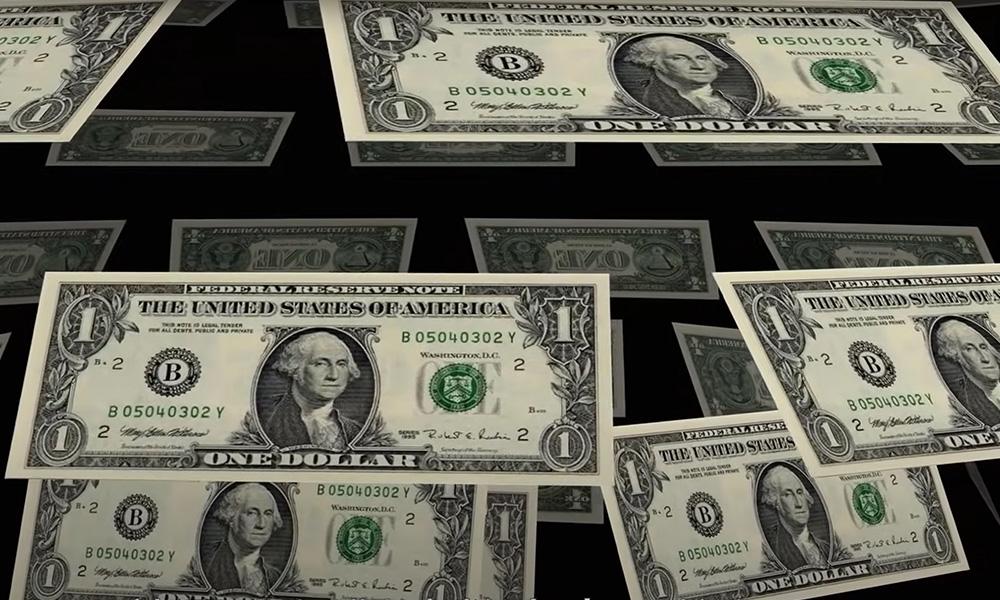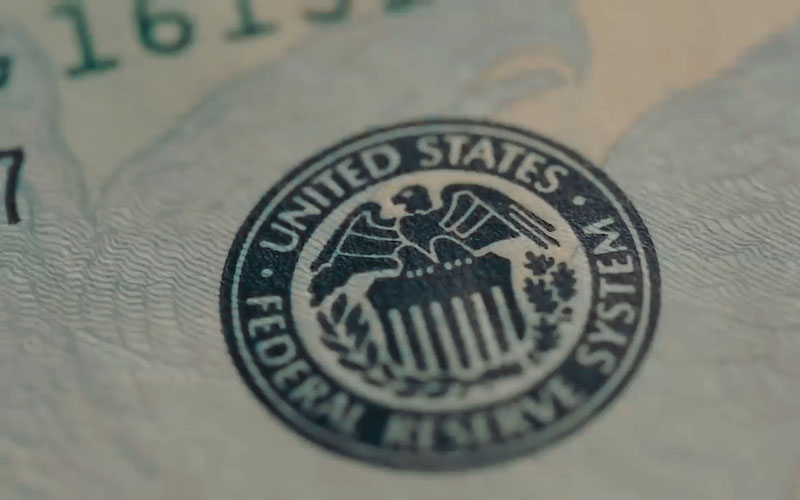Dollar collapse warning! Fed uncertainty + longest government shutdown in history – safe-haven appeal instantly dimmed.
2025-11-08 16:26:05

Government shutdown triggers wave of layoffs, leaving a vacuum in official US data.
The government shutdown directly resulted in the absence of official employment data, forcing traders to turn to private sector reports showing that the U.S. economy cut jobs significantly in the government and retail sectors in October, with cost control and the application of artificial intelligence pushing the number of layoffs to a peak.
A Westpac report bluntly stated that the surge in Challenger layoffs in the United States indicates a rapid cooling of the labor market.
Convera FX strategist Antonio Ruggiero pointed out: "The data vacuum amplified investors' optimistic illusions, and once bad news like Challenger exploded, a wave of liquidations instantly crushed the dollar."
According to the CME Group's FedWatch Tool, there is about a 67% probability of a rate cut at the next Federal Reserve meeting, with traders collectively betting on multiple rounds of easing in the future.
Franklin economist Mohit Kumar warned that the December meeting is as uncertain as a coin toss, with everything depending on labor market signals, and the current data desert causing the market to overreact to any slight movement. He emphasized that Fed Chairman Powell's comments last month have raised the bar for a December rate cut, making the path to easing in the short term fraught with difficulties.
In-depth analysis of the US Dollar Index: Short-term rebound shattered, net short positions become dominant.
The US dollar index led the decline among G10 currencies this week, with weak private sector data directly igniting investor concerns, and strong resistance at the 200-day moving average also triggering a short-selling counterattack.
Despite TS Lombard analyst Andrea Cicione's continued optimism that strong US economic growth and weak dollar sentiment could help a short-term rebound, market surveys show that traders will be net short of the dollar in November, expecting it to continue weakening in the coming months.
Chicago Fed President Goolsby's "fog theory" added further uncertainty, stating bluntly that the lack of inflation data due to the government shutdown made further interest rate cuts more cautious: "When things are unclear, it's time to slow down." After Powell acknowledged the risks of easing last week, the dollar rose for five consecutive days, but all that vanished when bad labor news came out on Thursday.
Euro staged a dramatic comeback: Stable policy rates and expectations of interest rate cuts in the US and UK propelled it up 0.23%, reversing its downward trend.
The euro rose 0.15% to 1.1564 against the dollar on Friday, gaining 0.23% for the week, rebounding strongly from two consecutive weeks of losses. Expectations of stable interest rates from the European Central Bank provided the biggest support, in stark contrast to the anticipated further rate cuts in the US and UK in 2026. A surprise plunge in Chinese exports in October—the largest drop since February, following months of early shipments to avoid tariffs—sounded alarm bells for the global economy, potentially exacerbating pressure as Asian markets shift towards European markets, but the euro still managed to rise on this positive momentum.
USD/JPY Rollercoaster: A sharp drop after safe-haven buying ends a 0.4% weekly decline, concluding a winning streak.
The USD/JPY pair initially surged this week before retreating. It soared to 154.48 at the start of the week (a new high since February 13th), benefiting from safe-haven flows back into the dollar, even stealing some of the yen's defensive appeal. However, it fell sharply by 0.68% to 152.83 on Thursday (a near one-week low), and although it rebounded 0.25% on Friday to close at 153.40, it still fell 0.4% for the week, ending a two-week winning streak. Analysts pointed out that the safe-haven rush helped the dollar recover, but after the collapse in labor data, buyers only managed to hold the 153 level, making the short-term upward trend precarious.
The British pound staged a V-shaped rebound: after bottoming out at 1.3009, it rose for three consecutive days, resulting in a slight weekly gain of 0.1%.
The pound rebounded after hitting a low this week. On Tuesday, the dollar fell sharply to 1.3009 (a new low since April 14), but then rose for the next three trading days, closing at 1.3158 on Friday, for a weekly gain of 0.1%.
The Bank of England maintained its interest rate at 4.0% by a narrow 5-4 vote, addressing the dual challenges of high inflation and a weak labor market. Investors are hoping for a rate cut in December. Neil Mehta, a manager at RBC Capital Markets, said that Governor Bailey held the key vote, and the market remained calm because the focus had shifted to December.
Chancellor Reeves pledged to stay on track in his pre-budget speech, despite high interest rates and insufficient investment. Societe Generale strategist Kit Juckes predicted: "Difficult decisions are on the horizon, taxes will rise, and campaign promises will be hard to keep."
Australian and New Zealand currencies plunge: Stock market crash + weak employment, New Zealand dollar leads the decline, falling 1.73%.
The Australian and New Zealand dollars were hit hard, both falling sharply for the week, dragged down by concerns about global stock market valuations. The New Zealand dollar fell 1.73% to close at 0.5625, hitting a low of 0.5605 (a new low since April 9), as weak domestic employment strengthened expectations that the Reserve Bank of New Zealand would cut interest rates this month.
ANZ strategist David Croy is optimistic: "While negative sentiment has loomed throughout the year, there are signs of improvement." The Australian dollar closed at 0.6494 on Friday, failing to break through the 0.65 resistance level, and fell 0.78% for the week (its first weekly decline in a month).
The Reserve Bank of Australia (RBA) has maintained its interest rate at 3.60% for the second consecutive time. High core inflation, strong consumer spending, and a housing market recovery have made the central bank cautious, with only a 10% probability of a rate cut in December. The Commonwealth Bank of Australia team, however, has reversed its stance and is bullish: "Narrowing interest rate spreads, a robust economy, and strong commodities will push the Australian dollar higher."
Overall Assessment: Uncertainty dominates, dollar weakness may continue, and alarm bells continue to ring for the global economy.
The core theme of the currency market this week was the US data vacuum and the uncertainty surrounding the Federal Reserve. The government shutdown delayed the non-farm payroll report, and the double blow of private sector layoffs and the collapse of Chinese exports completely undermined the safe-haven appeal of the US dollar.
Barclays predicts a 60% chance that the shutdown will end between November 11th and 21st, with a 15% chance it will extend into December. The dollar may experience a short-term technical rebound, but the prevailing consensus of net short positions and expectations of interest rate cuts will likely keep the dollar weak in the coming months. Investors should be wary of labor market and inflation signals; the global economic outlook remains gloomy, and a larger storm may be brewing.
- Risk Warning and Disclaimer
- The market involves risk, and trading may not be suitable for all investors. This article is for reference only and does not constitute personal investment advice, nor does it take into account certain users’ specific investment objectives, financial situation, or other needs. Any investment decisions made based on this information are at your own risk.





















